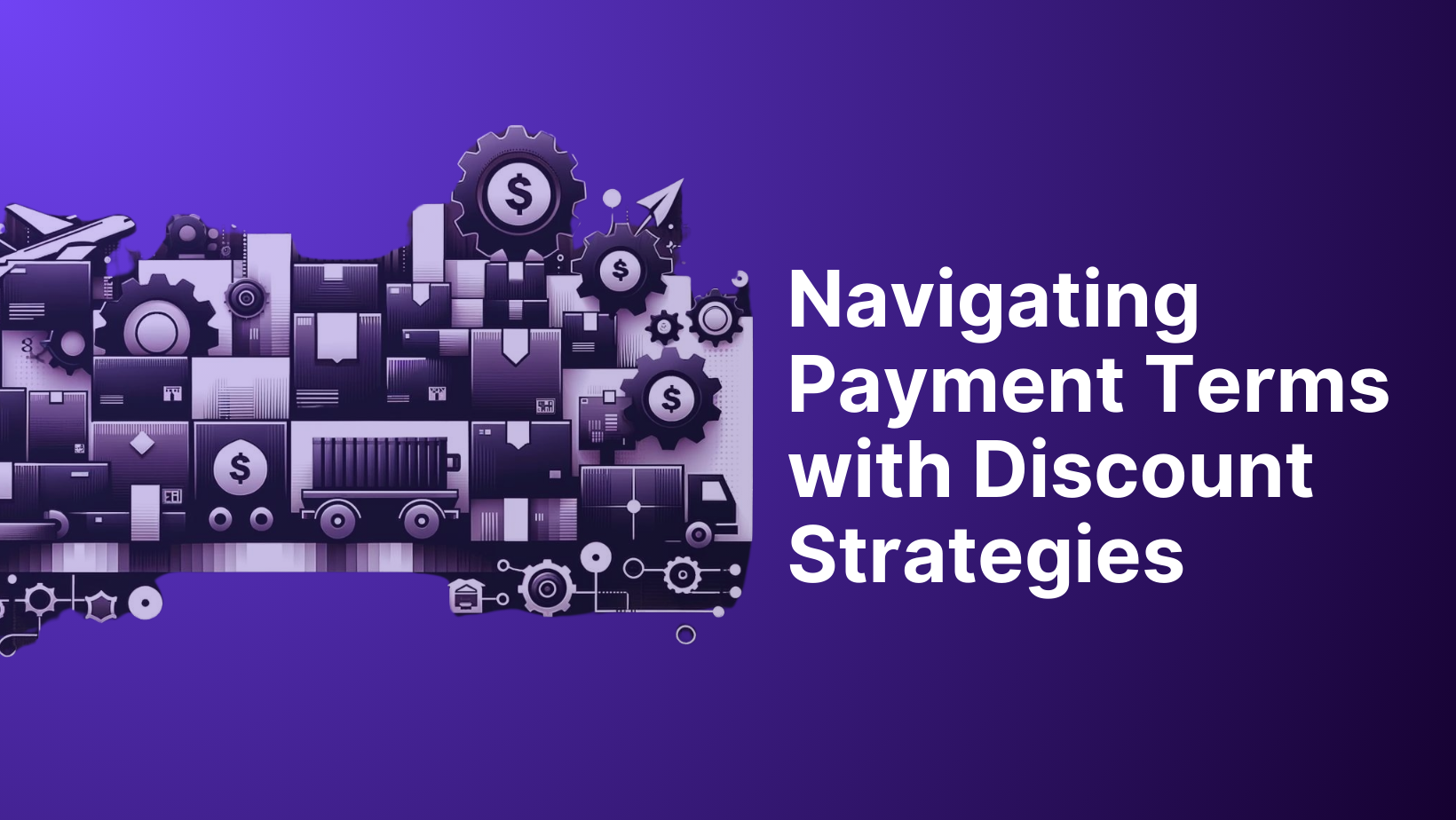Major retail expansion, rapid growth opportunities, and increasing production demands all share a...
Navigating Payment Terms with Discount Strategies

As a founder of a rapidly growing consumer brand, one area you need to review carefully is payment terms with suppliers and retailers. Understanding the terms and timelines of when retailers will pay you and when you pay your manufacturers can boost your bottom line and give you wiggle room to fund expansion plans.
By implementing smart payment term discounts, you can enhance cash flow and profitability. This contributes to a more sustainable business model over the long-term. Every margin point matters when negotiating with partners and customers.
Key Elements of Payment Term Discounts
Standard Discount Terms
The "2/10 Net 30" format is a common structure for these discounts. Under these discount payment terms, if the buyer pays within 10 days, they receive a 2% discount on the invoice. If not paid within this period, the full invoice amount is due in 30 days. This approach motivates quicker payments from the buyer.
Extended or Net Terms
In addition to early payment discounts, many businesses implement extended payment terms, such as Net 30, Net 60, and Net 90. These terms define the timeframe for full payment, typically based on the date of goods receipt or shipment.
Prompt Payment Discounts in Extended Terms
Sellers may also offer discounts for early payment under extended terms, typically expressed as X/A Net D. In this format:
- X represents the discount percentage.
- A indicates the number of days within which early payment should be made to qualify for the discount.
- Net D specifies the total payment duration.
For instance, "2/10 Net 60" implies a 2% discount is offered if payment is made within 10 days, while the total payment period extends to 60 days. Sometimes, the early payment part is skipped in conversation- e.g., “2 Net 60”. In that case, it’s wise to request clarification on early payment expectations.
Here is an example from the perspective of a consumer brand:
A retailer buys product from your brand:
Say a retailer places an order with your brand for $100,000 worth of inventory. You offer payment terms of "2/10 Net 30" - meaning if the retailer pays the invoice within 10 days after they receive the product, they get a 2% discount.
So if the retailer pays within 10 days, they pay $98,000 (which is $100,000 minus a 2% discount of $2,000). If they pay after 10 days, they pay the full $100,000 by 30 days.
Keep in mind that the retailer pays brands the wholesale price of the product, not the MSRP (manufacturer's suggested retail price).
Your brand pays a manufacturer:
You place a $50,000 order with an ingredients supplier and they offer you payment terms of "2/10 Net 30."
If you pay the supplier within 10 days, you pay $49,000 (which is $50,000 minus a 2% discount of $1,000). If you pay after 10 days, you pay the full $50,000 by 30 days.
This creates an incentive for you to pay faster and benefit from the discount, boosting the supplier's cash flow. The same dynamic applies when you offer these payment term discounts to retailers.
Efficient Payment Strategies of Major Retailers
Leading retailers like Walmart, Target, and Amazon leverage early payment discounts as a strategic tool to manage vendor payments efficiently. While these discounts incentivize quicker payments, there's a growing trend of extending payment periods, which could strain suppliers' margins.
Amazon's payment terms, typically ranging from 30 to 60 days, generally include a discounted payment feature, allowing a 2% savings for early settlements. This arrangement serves as an excellent early payment discount example, highlighting Amazon's skill in boosting cash flow while offering vendors fast payment benefits. Walmart customizes its payment strategies for suppliers, offering terms from 30 to 90 days. Typically, Walmart offers a 2% early payment discount.
As retailers stretch payment deadlines—sometimes even up to 120 days—it's crucial to keep in mind that you've got wiggle room. Being a savvy founder means negotiating terms that don’t squeeze your cash flow dry.
Implementing Payment Term Discount Strategies
Putting these concepts to use is a win-win: sellers get their money sooner to reinvest in their business, while buyers enjoy a reduced cost for their purchases.
For leaders of emerging brands, understanding and implementing payment term discount strategies can be a game-changer. Here are some actionable steps:
- Negotiate with Retailers and Suppliers: Initiate conversations about early payment discounts. It’s important to discuss and agree on terms that are beneficial for both parties.
- Analyze Cash Flow: To capitalize on these discounts, ensure that your cash flow allows for early payments without straining other aspects of your business.
- Educate Your Team: Make sure your finance team understands the importance of capturing these discounts when they are financially viable.
Unlock Growth by Understanding Discounted Payment Terms
The strategy of implementing discounted payment terms can play a pivotal role in the financial health and growth of consumer brands. By understanding and utilizing these tactics, companies can negotiate better deals, improve cash flow, and ultimately drive profitability and growth.
Remember, every penny saved is a penny earned. Embracing payment terms with discount strategies is not just about savings; it's about cultivating a financially smart and agile business.
For more on payment terms and other tips for small business owners, check out https://fitsmallbusiness.com/how-to-sell-wholesale/.

.jpg?height=200&name=Lunr%20Blog%20Posts%20(1).jpg)
